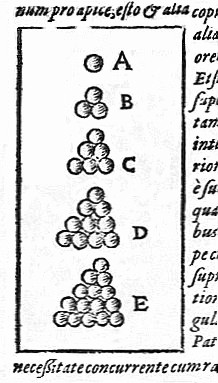Kepler conjecture
The Kepler conjecture is a problem in math. It wants to know the best way to put spheres together so there will be only a little bit of room between the spheres. That means the spheres are put together very tightly, meaning they are dense.

Details
changeThe Kepler conjecture is about Sphere packing in three-dimensional Euclidean space. It is named after Johannes Kepler (1571-1630) who first had this idea. Kepler supposed that the ways to pack spheres of equal size that result in the packing with the highest density are face-centered cubic or hexagonal packings. Those two things are crystal structures, meaning ways to put things together in a repeating pattern. These packings have a density of slightly over 74 percent, this means that they fill about 74 percent of space available.